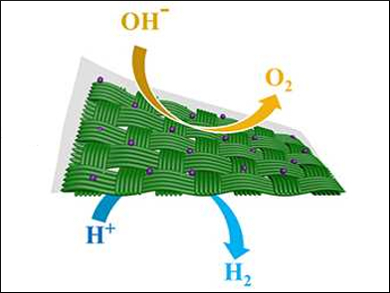Metal–organic frameworks (MOFs) and MOF-derived nanomaterials have attracted a lot of research interest as highly efficient noble-metal-free catalysts. Two-dimensional (2D) MOF nanosheet materials combine the advantages of 2D-layered nanomaterials and MOFs and are considered particularly promising nanomaterials.
Hui Xu, Shiqing Xu, Jiliang University, Hangzhou, China, Junkuo Gao, Zhejiang Sci-Tech University, Hangzhou, China, and colleagues have developed an easy and scalable synthesis of [Co3(μ2-OH)4(hpa)2]·2 H2O (hpa = hypoxanthine) MOF nanosheets. The MOF nanosheets were prepared using a hydrothermal reaction of Co(OAc)2·4 H2O and hypoxanthine in an alkaline solution at 130 °C over four days. The nanosheets were then subjected to pyrolysis to obtain 2D cobalt-embedded N-doped carbon nanosheets.
The synthesized catalyst shows excellent and stable catalytic performance for electrocatalytic oxygen-/hydrogen-evolution reactions. The nanosheet structure, the well-dispersed carbon-encapsulated Co nanoparticles, and the N-dopant sites provide high conductivity and a large number of accessible active sites, which leads to good electrocatalytic properties.
- Two-Dimensional Co@N-Carbon Nanocomposites Facilely Derived from Metal-Organic Framework Nanosheets for Efficient Bifunctional Electrocatalysis,
Jingkun Cong, Hui Xu, Mengting Lu, Yuhang Wu, Yuwen Li, Panpan He, Junkuo Gao, Juming Yao, Shiqing Xu,
Chem. Asian J. 2018.
https://doi.org/10.1002/asia.201800319



